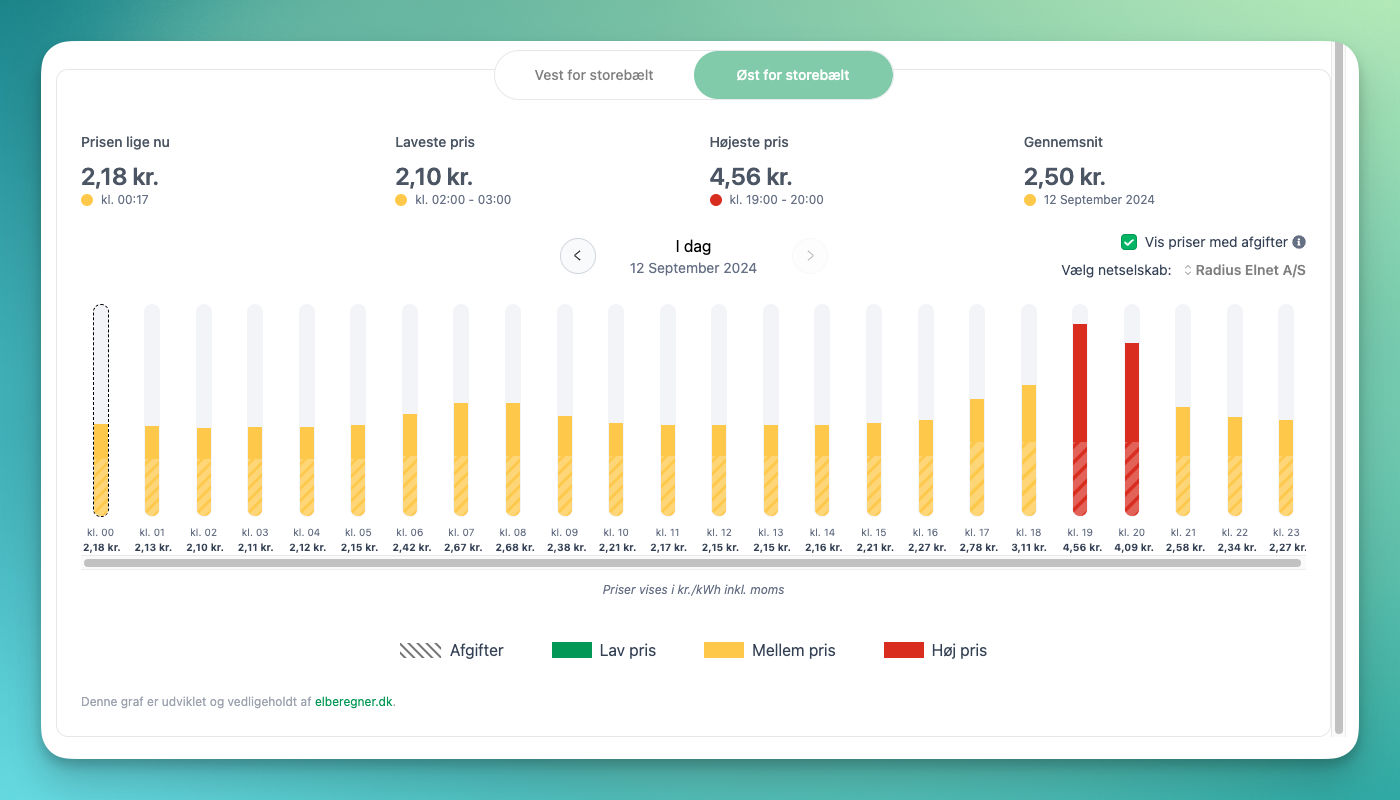Things I enjoy about Denmark, Part 1: Electricity
I’ve recently relocated to Denmark from Germany, and even though its a direct neighbor, there are some things that are vastly different.
I want to write those things down when I notice them and while they are still new and exciting, before I get used to them.
You may have noticed that I was very optimistic and labelled this article “Part 1”, indicating that this will be an ongoing series. I really want this to become a series. Maybe it will happen. If you read this a year after it was published and there is no second part to this, please do annoy me about it.
With that out of the way, let’s jump into the first thing that I enjoy about Denmark: Electricity.
Electricity Pricing Models
In Germany, there are a few new electricity providers that offer variable electricity prices. Variable electricity prices in of itself are nothing new. Electricity is bought at an exchange and prices vary depending on supply and demand: If a lot of people need electricity (i.e. in the morning or evening), prices rise. If there is low demand for electricity (i.e. because a lot of people are at work/school), prices drop.
Historically, German electricity providers did not pass this fluctuation in price on the the customer. You usually have a contract with the provider for a set price per kWh. Those new providers allow passing on the variable price. That’s nice, because when you work from home you can just start you washing machine when prices are low and save a few bucks.
However, what’s needed to be able to profit from those prices is a way for the provider to know how much electricity you used when. In Germany, you usually have to install special hardware that allows monitoring your energy usage on your electricity meter. This has to be connected to Wifi, which prevented me from using it in my old apartment, since the electricity meter was located in the basement.
This is not the case in Denmark. Basically every provider offers both fixed and variable prices, and without the need to install anything. Why? Because in Denmark every electricity meter is a remotely read smart meter.
Smart Electricity Meters
Since the end of 2020, every household in Denmark has a smart meter installed that is operated by EnergiNet, an independent but publicly-owned company that runs the Danish energy infrastructure (by the way, the executive order that every household in Denmark should have a smart meter was issued in January of 2019, so it took about 2 years for this to be done).
For me as a customer, that means a few things. First, I’m able to be use variable prices, since my usage will be measured anyways. I can now just check my energy providers website for todays (and tomorrows) electricity prices. For today, this tells me that prices are high in general (so maybe I want to skip laundry) and are very high in the evening (7pm and 8pm, so I would definitely want to skip laundry there).

Another cool thing is that I can easily check my current consumption in almost real time (there is usually about 24 hours of delay) online without having to walk to my meter and enter a bunch of numbers. Here’s what we’ve used to far since moving in:

Initially, we had a lot of laundry and dishes to wash, so the first few days our consumption was quite high. It’s gone down a little now.
I don’t really get much out of this currently, as our consumption seems to be on the lower end for a family of four, but it’s nice to look at it every now and then and see how we’re doing.
Availability of data
Also very interesting is the fact that all of this data is publicly available. For example, here is a dataset for the spot prices of the next day. This allows apps like Min Strøm to exist. This app not only shows the current and upcoming prices, it can even show how electricity is currently generated.

At the time of writing this (in the middle of the night), most electricity comes from wind (is sure is windy tonight) and biomass. Over the day, about 50% usually comes from solar.
For Danes and probably other Scandinavian folks, this is probably nothing new. But I was absolutely flabbergasted that this is just the norm in Denmark.
There also seems to be more you can do with your smart meter in connection to your CPR number. Unfortunately, I’m still waiting on mine, so I’ll likely come back to this topic in the future.